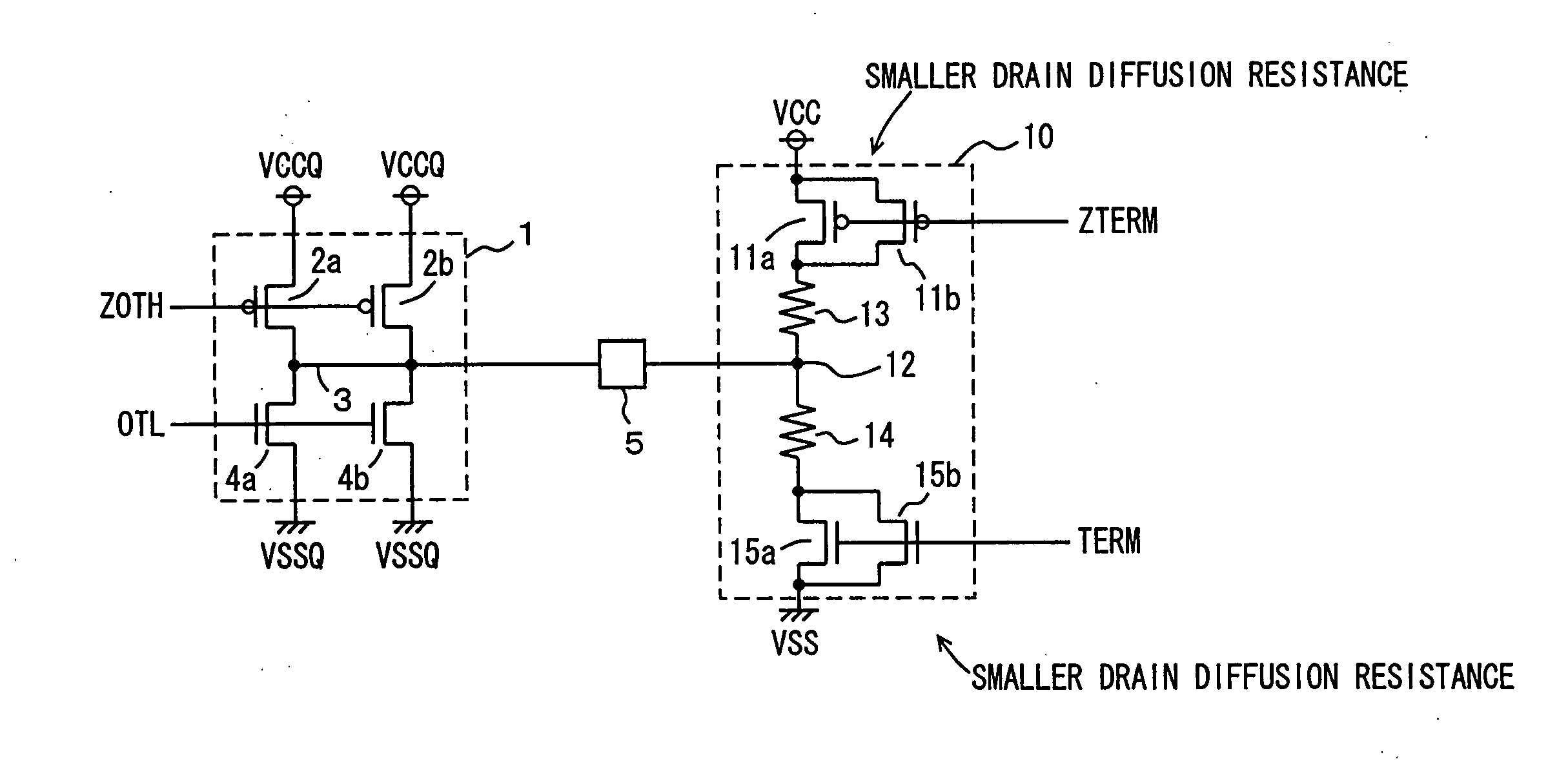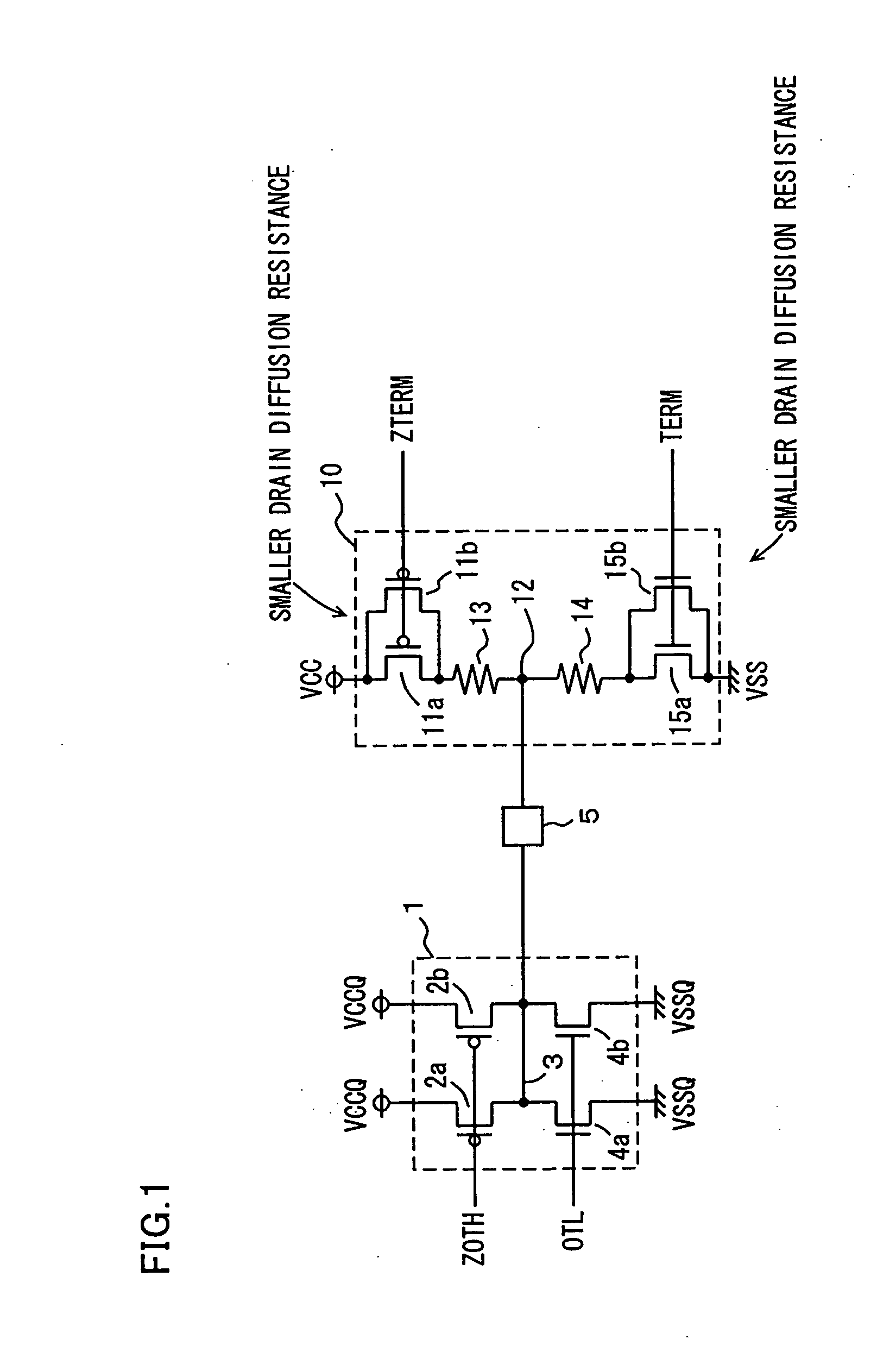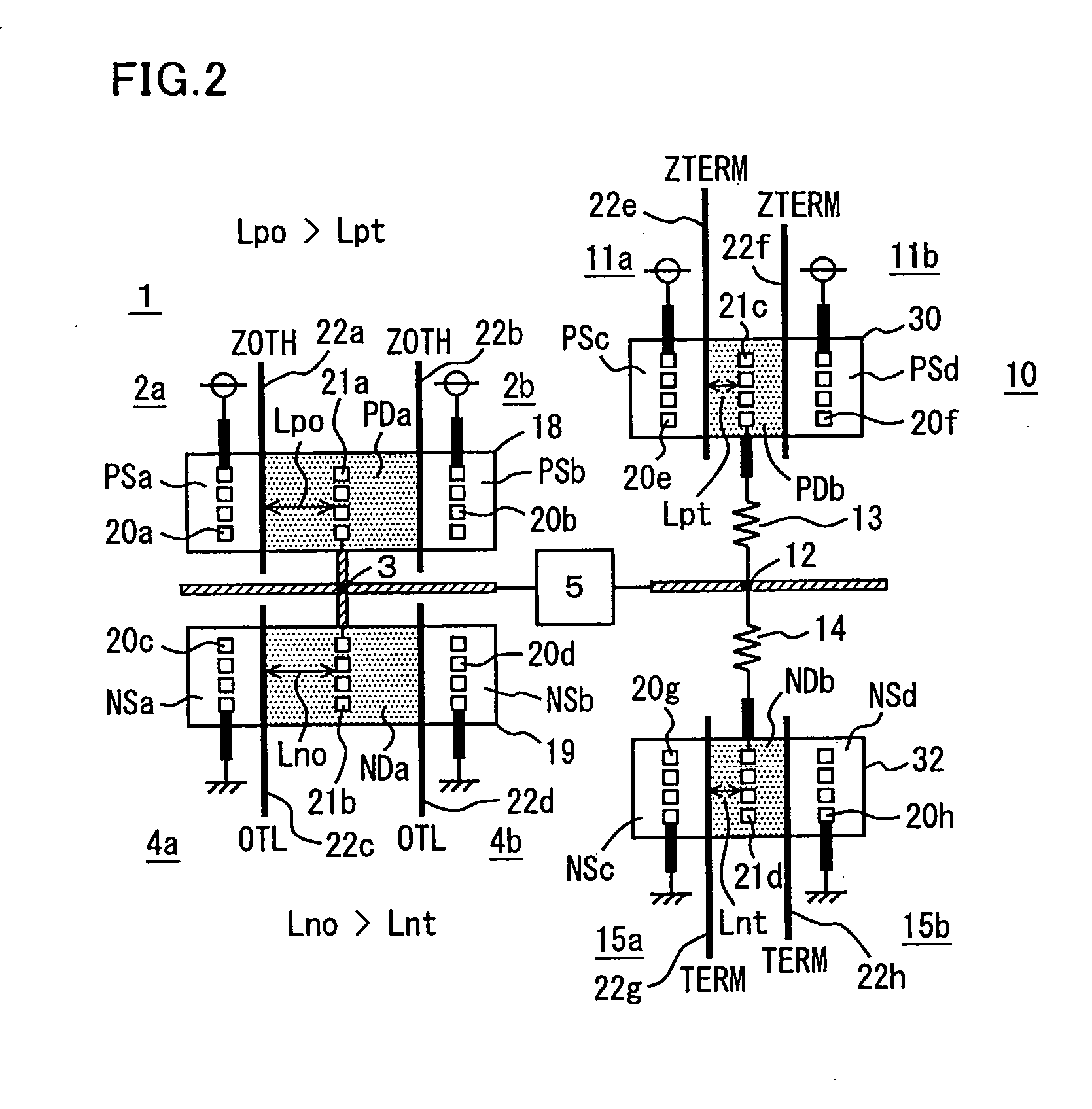Semiconductor device with bus terminating function
a technology of a semiconductor device and a bus, applied in the field of semiconductor devices, can solve the problems of low reliability, signal cannot be transmitted at high speed, and electrical static damage, and achieve the effects of high speed, accurate transmission of signals, and high speed
- Summary
- Abstract
- Description
- Claims
- Application Information
AI Technical Summary
Benefits of technology
Problems solved by technology
Method used
Image
Examples
first embodiment
[0038]FIG. 1 shows a configuration of a main part of a semiconductor device according to a first embodiment of the present invention. In FIG. 1, an output circuit 1 and a terminating circuit 10 provided for an external output pad 5 are representatively shown. Pad 5 is connected to a pin terminal, which is not shown.
[0039] Output circuit 1 includes P-channel MOS transistors 2a and 2b each connected between a power supply node and an output node 3 and selectively made conductive in accordance with an output control signal ZOTH, and N-channel MOS transistors 4a and 4b each connected between output node 3 and a ground node and selectively made conductive in accordance with an output control signal OTL. Power supply voltage VCCQ for the output circuit is supplied to the power supply node, and ground voltage VSSQ for the output circuit is supplied to the ground node. Output node 3 is connected to output pad 5.
[0040] The logic levels of output control signals ZOTH and OTL are set in acco...
second embodiment
[0102]FIG. 9 schematically shows a configuration of an output circuit and a terminating circuit according to a second embodiment of the present invention (hereinafter, both of the circuits are collectively referred to as a semiconductor device). In the configuration shown in FIG. 9, output node 3 of output circuit 1 is electrically connected to pad 5 via interconnection line 50. Terminating circuit 10 is provided distant from pad 5 relative to output circuit 1. A terminating node 12 of terminating circuit 10 is connected to the same interconnection line 50. Terminating node 12 of terminating circuit 10 and output node 3 of output circuit 1 are electrically connected to pad 5 via common interconnection line 50.
[0103] Similarly to the first embodiment, output circuit 1 includes pulling up P-channel MOS transistors 2a and 2b, and pulling down N-channel MOS transistors 4a and 4b, which drive output node 3 in accordance with output control signals ZOTH and OTL, respectively.
[0104] Simi...
PUM
 Login to View More
Login to View More Abstract
Description
Claims
Application Information
 Login to View More
Login to View More - R&D
- Intellectual Property
- Life Sciences
- Materials
- Tech Scout
- Unparalleled Data Quality
- Higher Quality Content
- 60% Fewer Hallucinations
Browse by: Latest US Patents, China's latest patents, Technical Efficacy Thesaurus, Application Domain, Technology Topic, Popular Technical Reports.
© 2025 PatSnap. All rights reserved.Legal|Privacy policy|Modern Slavery Act Transparency Statement|Sitemap|About US| Contact US: help@patsnap.com



